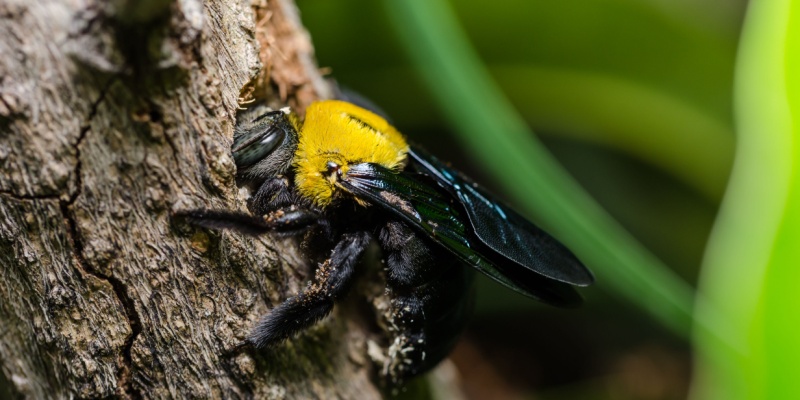


In Morris County, homeowners often face a unique challenge that can cause significant damage to their properties: carpenter bees. Unlike their more social relatives, carpenter bees are solitary creatures, but their nesting habits can lead to costly repairs and structural damage if not addressed properly. Understanding the behavior of carpenter bees, recognizing the signs of an infestation, and taking effective measures to mitigate these problems are crucial for homeowners in Morris County.
Carpenter bees resemble bumblebees but have a distinctive smooth, shiny black abdomen. Unlike bumblebees, which nest in the ground, carpenter bees create their nests by burrowing into wood. They prefer untreated, exposed wood commonly found in deck railings, eaves, and wooden furniture. While they do not consume the wood, the tunnels they create can weaken structures over time and lead to aesthetic and structural damage.
The most apparent signs of a carpenter bee infestation include:
Carpenter bee infestations can lead to several problems for homeowners. Firstly, the structural integrity of wooden elements in homes can be compromised. Over time, repeated infestations can result in extensive damage, necessitating costly repairs. Secondly, the presence of carpenter bee nests can attract woodpeckers, which exacerbate the damage by drilling into the wood to feed on the bee larvae.
Carpenter bee infestations represent a significant challenge for homeowners in Morris County. However, with a proper understanding of these pests and proactive measures, it is possible to manage and prevent the damage they cause effectively. Painting or treating wood, implementing physical barriers, and engaging professional pest control services can protect your property from carpenter bees. By staying vigilant and addressing signs of infestation early, homeowners can maintain the structural integrity and aesthetic appeal of their wooden structures and enjoy their outdoor spaces without the threat of carpenter bee damage.